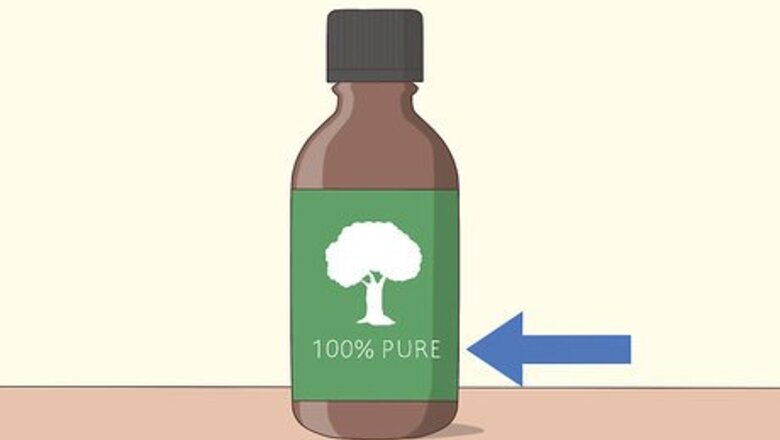
views
Using Tea Tree Oil as a Spot Treatment For Acne

Purchase pure tea tree oil. Getting pure oil will ensure that you don't end up applying unknown chemicals or ingredients on your skin. Look at that label and make sure it say 100% pure tea tree oil, as products and their concentrations can vary. Even if you plan on diluting the tea tree oil, purchase 100% tea tree oil. This will allow you to control what you use to dilute or mix into your oil.
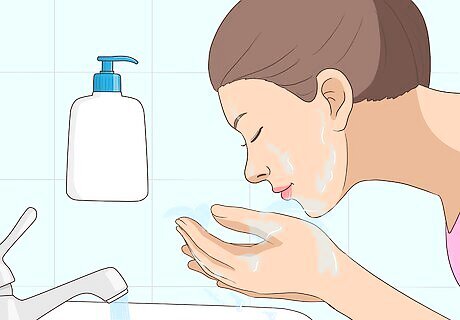
Wash your skin. Use a mild soap or cleanser to clean the area that has acne. Then dry the skin, as the tea tree oil should be applied to a dry surface. It's important to apply tea tree oil to clean skin, as it's easier for the tea tree oil to clean pimples and acne when the skin on top is already clean. Tea-tree oil is usually considered safe for topical use. To get better results and use it safely, it is better to wash your face with a cleanser. Then dry it gently with a towel before applying the oil.
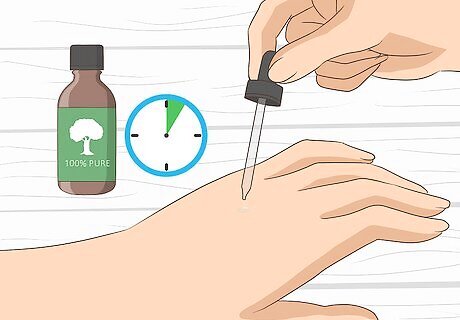
Test the tea tree oil on your skin. Before applying tea tree oil to your acne, you should test it on a healthy spot of skin. Dab a drop of the oil on your hand or other easily accessible spot of skin and let it sit there for a few minutes. If it does not irritate your skin at all, then it is appropriate to use on your acne. If the tea tree oil does irritate your skin, you can either decide not to use it at all or dilute it down enough so it doesn't irritate your skin. Common side effects of tea tree oil include irritation, redness, or dried skin.

Make a homemade spot treatment, if necessary. If you find that pure, undiluted tea tree oil is a little too harsh, irritating, or drying on your skin, try using it in a homemade spot treatment. Simply mix a couple of drops of tea tree oil into 2 teaspoons of aloe vera gel, water, or a neutral oil, such as coconut or olive oil. Tea tree oil can be very helpful for treating acne even when it is only 5% of the spot treatment solution. You can also try mixing tea tree oil with raw, organic honey. Honey also contains antibacterial properties and promotes skin healing. Tea tree oil combined with honey can make a nice mask or paste. Store your spot treatment in a small glass container so it is available for easy application.
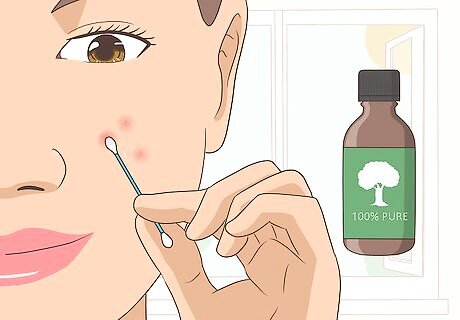
Apply the tea tree oil onto your pimples. Pour a few drops the tea tree oil or solution onto a cotton bud, cotton pad, tissue, or your fingertip. Then gently dab it directly to your pimples. Just a small amount of oil will penetrate the skin to unblock the sebaceous glands, disinfect pores, and dry out whiteheads, blackheads, and pimples.

Leave the tea tree oil on the acne for a few hours, or overnight. Leaving it on will give it time to absorb into the acne and do its job. The redness and swelling should decrease and the pores will be cleaned out. Then rinse your face with warm water and gently dry it after the tea tree oil has done its job. You can rinse the tea tree oil off with plain warm water or you can use a gentle cleanser, if necessary.

Repeat this treatment daily. Using tea tree oil to eliminate bacteria and clean out your pores will be most effective if done on a regular basis. However, you can apply the tea tree oil whenever you like, either in the morning or evening. This treatment should help reduce active pimples and any redness that remains due to continuing infection under the surface of the skin.
Using Tea Tree Oil in Skin Treatments
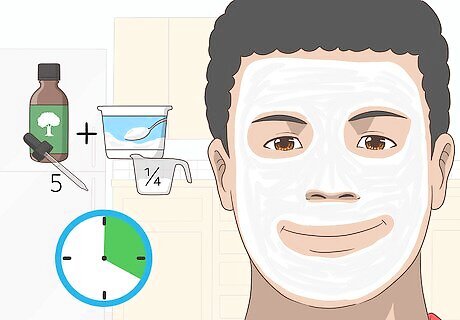
Use tea tree oil in a homemade face mask. A few drops of tea tree oil can be added to homemade face masks to kill bacteria and dry out pimples. Make a face mask using natural ingredients. Mix 3-4 drops of tea tree oil with 2 tablespoons (29.6 ml) of green clay powder, which can be found at most health food stores. Stir in enough water to turn your clay into a spreadable paste. Apply the mask evenly, leave the mask on for at least 20 minutes, and then rinse off with warm water and pat dry. Blend together 3 drops of tea tree oil, 1 teaspoon of jojoba oil, and half of a very finely chopped tomato. Apply this face mask directly to clean skin and leave on for 10 minutes, before rinsing off with warm water and patting dry. Add 5 drops of tea tree oil to 1/4 cup of plain yogurt (either traditional or Greek style) and apply as a mask. Rinse off with warm water after 15-20 minutes.
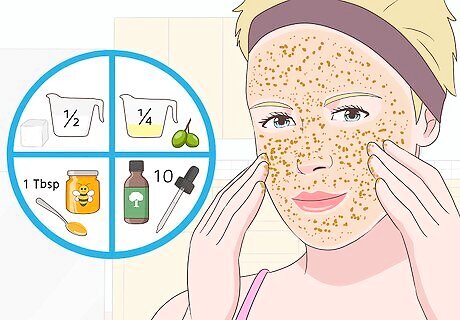
Add tea tree oil to a homemade face scrub. For an effective, acne-fighting face scrub, try mixing tea tree oil with some other natural ingredients from your kitchen cupboard. In a small bowl, combine 1/2 cup of sugar, 1/4 cup of sesame or olive oil, 1 tablespoon of honey, and approximately 10 drops of tea tree oil. Gently massage the mixture onto your damp face, using circular motions, for 2-5 minutes. Wash off with warm water and then pat your face dry. This scrub may be a little rough for people suffering from cystic acne but is perfect for mild to medium breakouts. As both tea tree oil and honey are natural preservatives, you can make this scrub in bulk and store in a jar in your medicine cabinet.

Add tea tree oil to your cleanser or moisturizer. A few drops of tea tree oil can be added to your daily moisturizer and cleanser to help combat stubborn pimples. Apply 2 - 6 drops, depending on how strong you want it. Be careful not to get it in your eyes. It could cause stinging or burning if the tea tree oil comes into contact with your eyes.
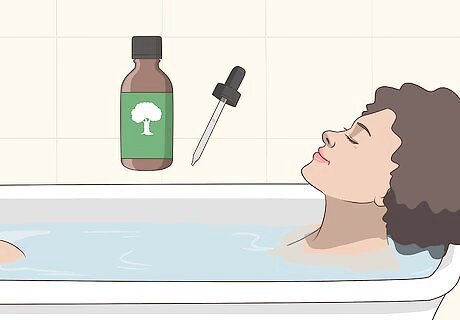
Put tea tree oil in your bath. Add a couple of drops of tea tree oil to your bath to help clear acne on your chest, back, and other parts of your body. Additionally, the oil will add a fragrant scent to your bath. Breathing in the tea tree-infused steam can also help to alleviate congestion, so you should also try this when you have a cold or allergies.
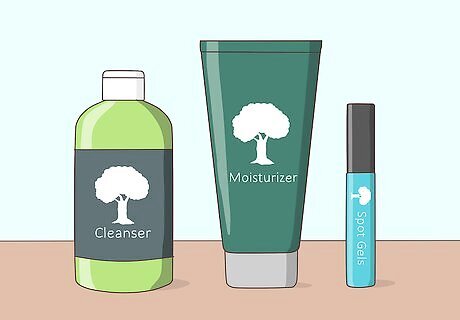
Purchase tea tree skincare products. Many brands have started using tea tree oil in their skin products because of its antibacterial and anti-inflammatory properties. If you feel that the pure, essential oil is a little too strong for your tastes or you don't have time to make your own tea tree skin products, buying a tea tree based product may be a good option. Tea tree cleansers, moisturizers, and spot gels are particularly popular.




















Comments
0 comment